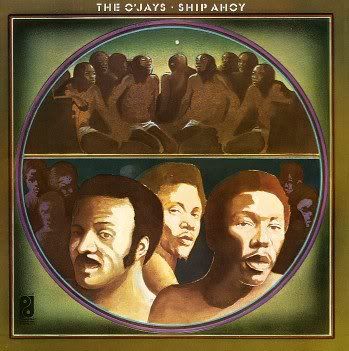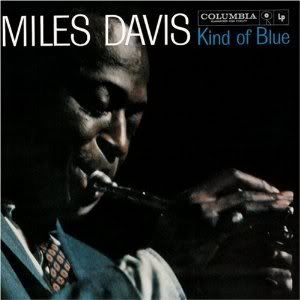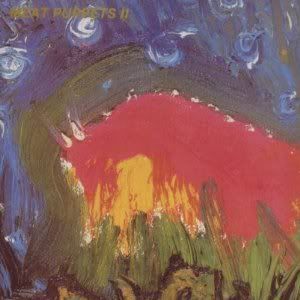
Artist: The O'Jays
Album: Ship Ahoy
Label: Epic
Year: 1973
Philly soul group The O'Jays had origins in Ohio in the late-50s. Though their roots and initial sound didn't separate them from many peers initially, by the early-1970s, they found success in the songwriting talents of Gamble and Huff and in a Philly scene whose sound was not too dissimilar than The Spinners and Chi-Lites, marked by bright guitars and a more pop-oriented take on 70s funk. They found real success with the 1972 album Back-Stabbers, the title track of which was a huge hit for the band. Their follow-up the next year however, would be an even greater triumph.
Back Stabbers proved The O'Jays were a force to be reckoned with, but Ship Ahoy is a more cohesive record. It's themes of almost hopeless pessimism are often frequently met with an upbeat sound, making the songs. "Put Your Hands Together" is a call to arms, clearly making the claim that things in the community/in the country aren't as they should be. "The Air I Breathe" is equally upbeat in sound, but in the song the group laments, "Why won't they find a solution/to what's causing the pollution," before going on, "Don't they care/what's happening to the earth?" Truly, these songs help to illustrate an incredibly un-selfish group. "Now That We Find Love" even points out the fear of the future--one so dark that upon things turning around socially, people won't even know what to do with positives.
The album is also really noteworthy for the scope of the epic tracks. The near-10 minute title track is a superb dramatizing of the slave ships Africans were brought in. It doesn't try to tell a story or "feel" like the journey, it's just a song about it in the most general sense. Using fewer lyrics and letting the music do what it needs is one of the reasons it works so well. "Don't Call Me Brother" is the other epic on the other side of the record, and equally good.
While there are a few personal tracks, they fit in with the general theme that seems be taking a wide look at the world as it currently is (at least to The O'Jays). "You Got Your Hooks In Me" and "People Keep Tellin' Me" lament the classic feeling of being in a relationship you can't get out of, no matter how much you should. Simple lyrics, great singing, and wonderful instrumentation. Throw in the now famous for its inclusion in The Apprentice, "For The Love Of Money" and you round out this sensational record.
The O'Jays never matched these highs again. The sound of early 70s funk that still had pop roots in the older, grittier R&B sound soon started giving way to the polished sound of disco. While slick and polished in terms of production, The O'Jays deliver this epic with grit that gives it character, rather than distracts from it (as a more polished work might). Ship Ahoy is one of the great 1970s funk albums, and definitely one of the last of its kind.


